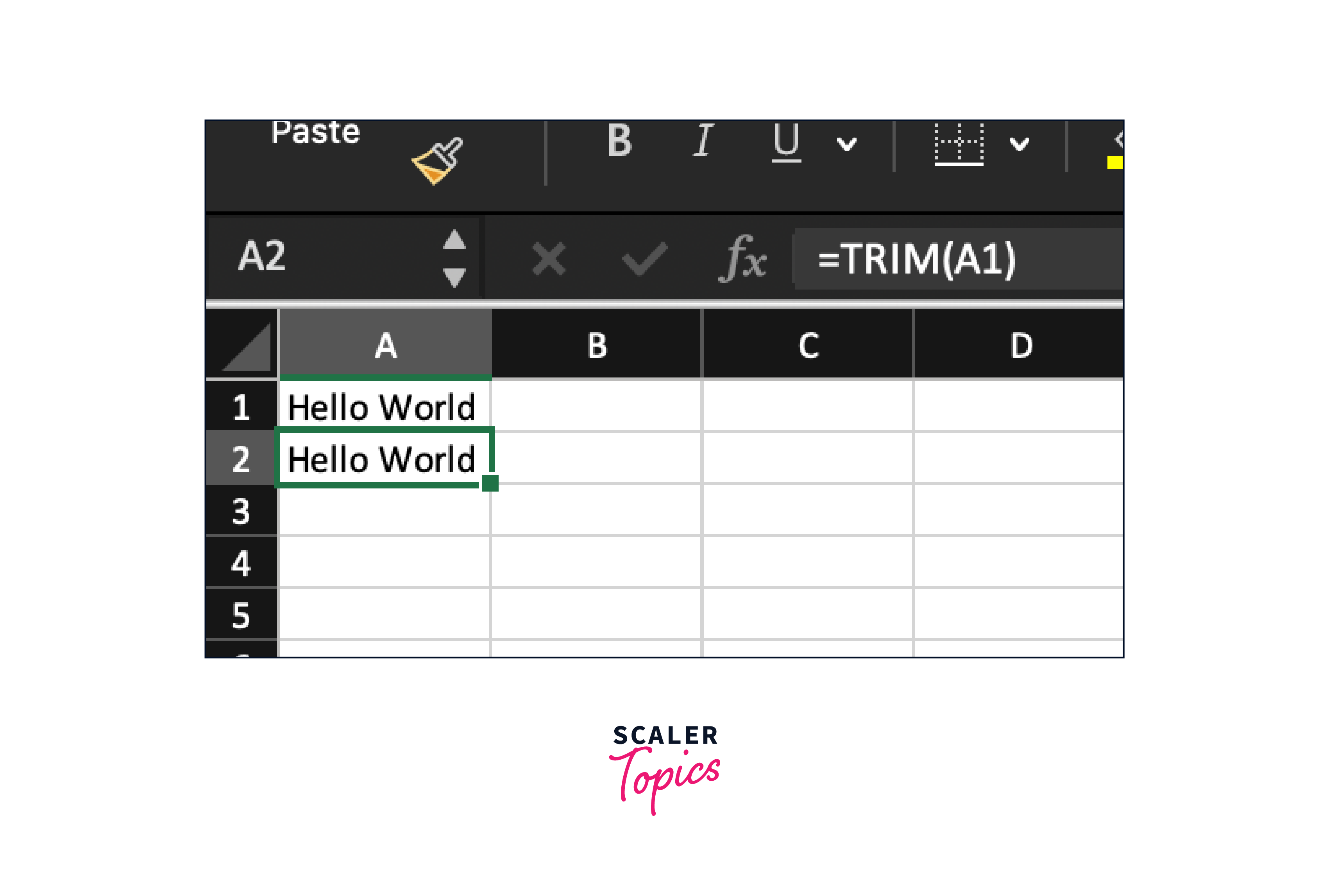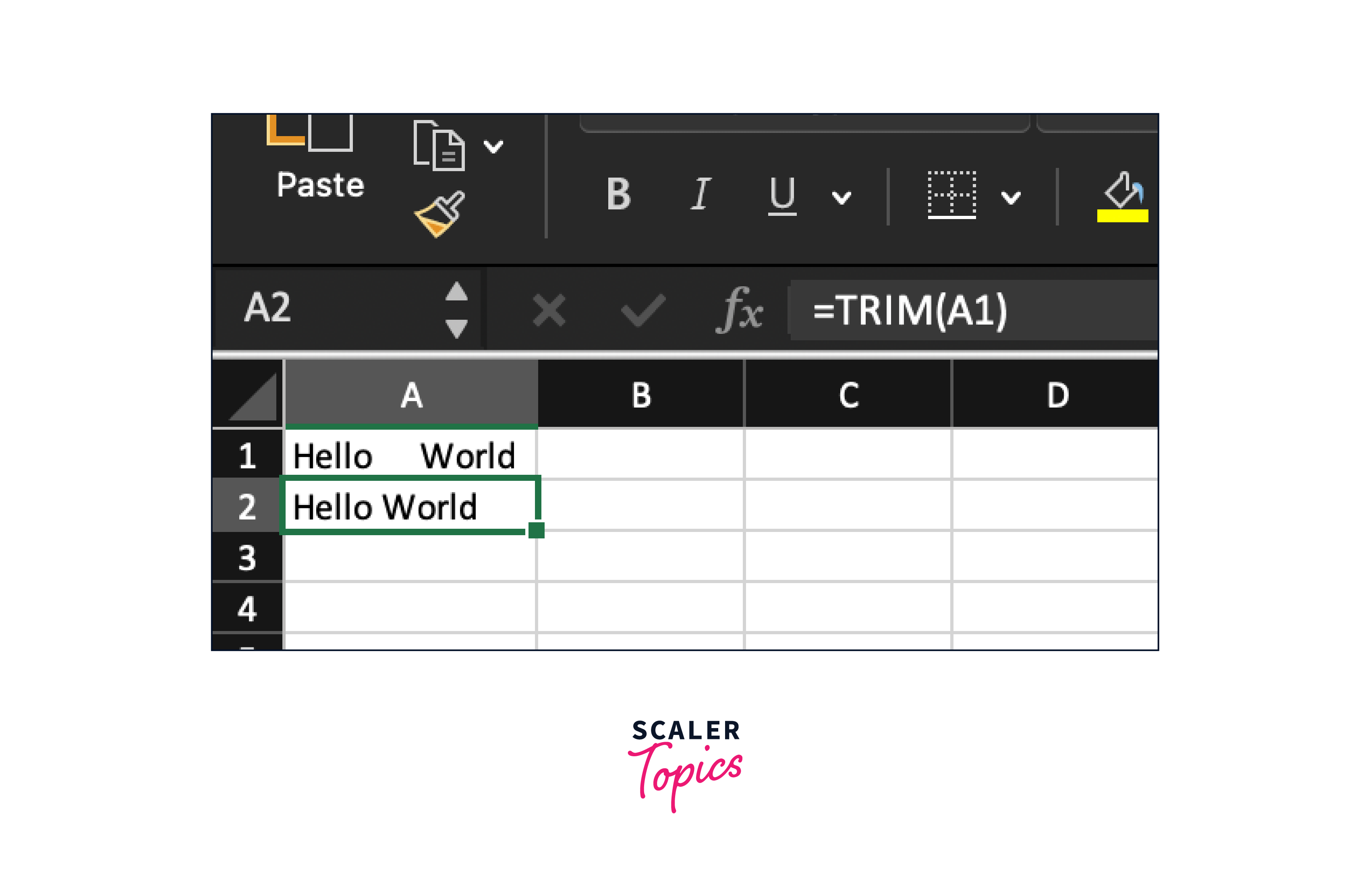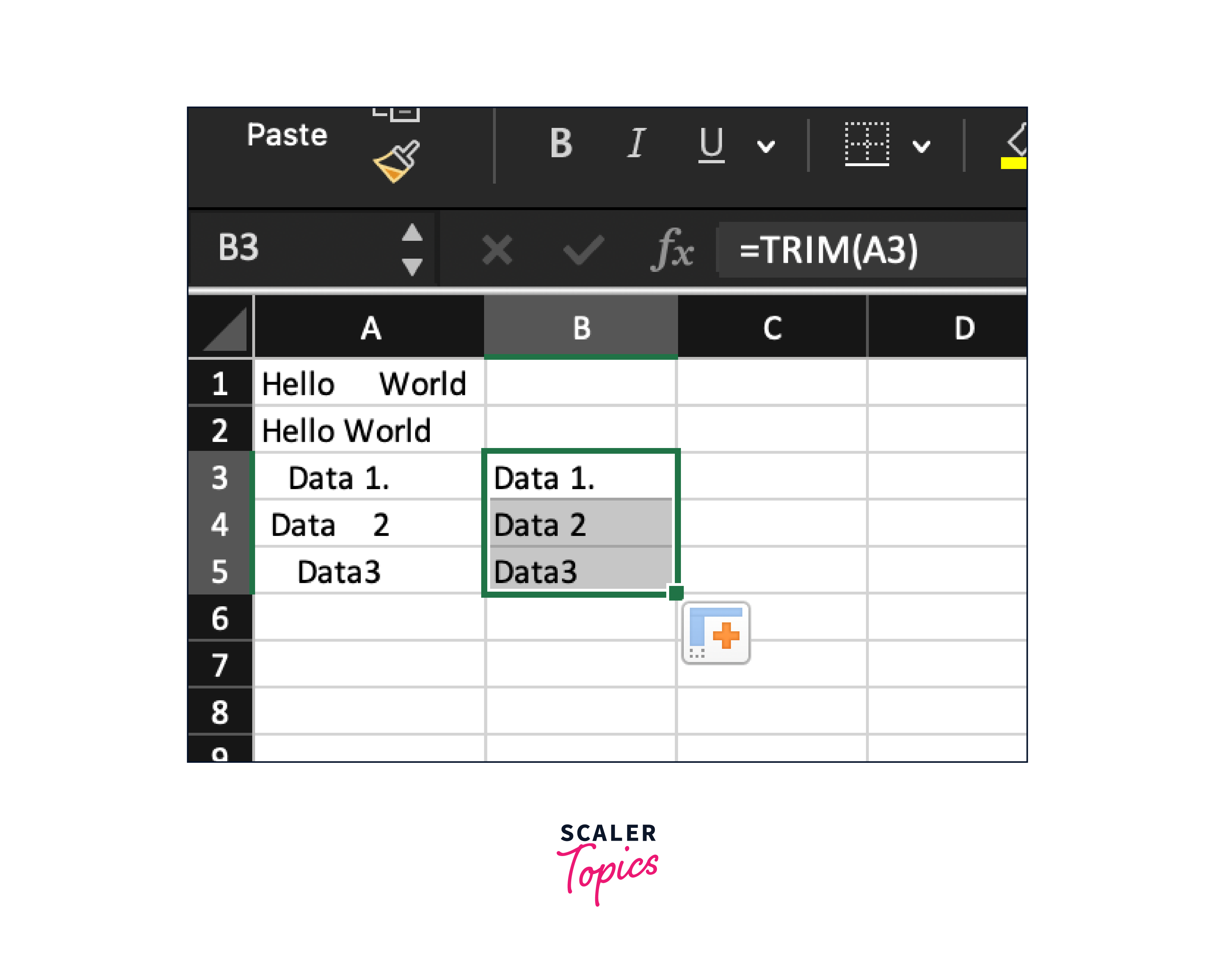Excel TRIM Function
Overview
Managing and cleaning data in Excel is paramount for accurate analysis and representation. The TRIM function emerges as a vital tool in this context. It helps users remove any leading, trailing, or excessive intermediate spaces within text entries, ensuring consistency and neatness in datasets. Particularly handy for data imported from other sources, which might have inconsistent spacing, the TRIM function is a fundamental tool for anyone looking to maintain clean and streamlined Excel sheets. Its straightforward implementation effectively streamlines text data, making subsequent data operations smoother.
What is the TRIM Function in Excel?
In Excel's vast array of functions, the TRIM function stands out as a dedicated tool for text refinement. Specifically, TRIM is a text function that removes any extra spaces in a string, leaving only a single space between words. Its main tasks include eliminating the following:
- Leading spaces:
Spaces at the beginning of a text string. - Trailing spaces:
Spaces at the end of a text string. - Multiple spaces between words:
If two or more spaces exist between words, TRIM condenses them to just one.
However, it's essential to note that TRIM does not affect single spaces between words or non-breaking space characters often used in web content. The function is particularly beneficial when working with data that might have been imported from other platforms, where spacing inconsistencies are common. By ensuring uniformity in spacing, the TRIM function aids in achieving cleaner data presentation and more accurate data processing in Excel.
TRIM Function in Excel Syntax
To use the TRIM function effectively, it's crucial to understand its syntax and how to input arguments correctly.
Syntax:
Parameter:
- text: This is the text or string from which you want to remove extra spaces. It can be directly inputted as a string inside double quotation marks or a cell reference containing the text.
Example:
-
Using a direct text string:
Result: "Hello World"
-
Using a cell reference: Suppose cell A1 contains the text " Hello Excel ".
Result: "Hello Excel"
The function will return a new text string, removing the leading, trailing, and excessive spaces between words. By referencing or inputting your text in the TRIM function, you can easily clean and streamline your data in Excel.
How to Use TRIM Function?
Excel's TRIM function is instrumental in removing irregular spaces from your data. Irregular spacing refers to unnecessary spaces within a dataset that can appear before, after, or between text or numbers within a cell.
Here's a step-by-step guide on how to use the TRIM function:
Step 1) Start the TRIM function:
- Begin by selecting a cell, let's say E2.
- In the formula bar, type =TRIM.
- Double-click on the TRIM function from the dropdown that appears to start using it.
Step 2) Using TRIM on a range of cells:
-
To use the function on a single cell, input =TRIM(cell).
Example: =TRIM(A2) to trim the cell A2.
-
For a range of cells, like A2 to C21, you would use: =TRIM(start cell:end cell).
Example: To clean up irregular spaces in a dataset within the range A2
, you would input =TRIM(A2:C21).
After hitting enter, Excel will display tidied-up values, and the dataset will be formatted without irregular spaces.
Step 3) Addressing spacing between text:
If you encounter text with spacing issues between words, you can still use the TRIM function to make it more readable.
Example: Imagine you have the text "Hello World" in cell A1. You can use the TRIM function like this:
The result will be a neatly formatted "Hello World".
Try it yourself! For hands-on practice, copy the values from the provided example and try using the TRIM function independently. You'll notice the substantial difference it makes in tidying up your data.
Remember, using the TRIM function lets you quickly ensure your Excel data remains clean and free from unnecessary spaces, making it look professional and easy to work with.
TRIM Function in Excel Examples
Understanding the TRIM function's utility is best achieved through examples. Here, we'll demonstrate a few common scenarios where the TRIM function can be invaluable.
-
Removing Leading and Trailing Spaces:
Original Text: " Hello World "
Formula: =TRIM(A1)
Result: "Hello World"

-
Eliminating Multiple Spaces Between Words:
Original Text: "Hello World"
Formula: =TRIM(A1)
Result: "Hello World"

-
Cleaning a Dataset with Irregular Spacing:
Suppose you have the following dataset in cells A3 to A5:
A3: " Data 1 "
A4: " Data 2"
A5: " Data3"

Formula:
In B3, input =TRIM(A3), drag this down to apply for A4 and A5.Result:
B3: "Data 1"
B4: "Data 2"
B5: "Data3"
-
Using TRIM on a Full Range:
If you have a column of names with inconsistent spaces in cells A7 to A10, you can apply TRIM to the whole range:
Formula in B7: =TRIM(A7:A10)
Excel will then apply the TRIM function to each cell in the range.
Using these examples, one can understand how the TRIM function can be a powerful tool to clean data, ensuring accuracy and consistency in Excel sheets.
Conclusion
- The TRIM function in Excel is an indispensable tool for data cleaning, primarily used to remove extra spaces from text data, ensuring a uniform and neat appearance.
- Beyond aesthetic purposes, eliminating unnecessary spaces is crucial for data accuracy, especially when comparing, combining, or analyzing text.
- TRIM's versatility shines when paired with other functions, allowing users to refine text and convert it to other data types or combine it seamlessly with other strings.
- While it chiefly targets spaces, the function is invaluable in maintaining data consistency across large datasets, preventing potential errors in data analysis.
- Given Excel's widespread use in professional settings, mastering the TRIM function can greatly enhance one's efficiency and precision when handling large amounts of textual data.
